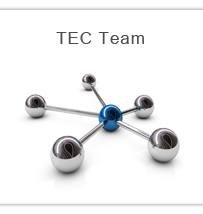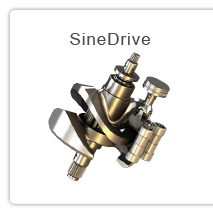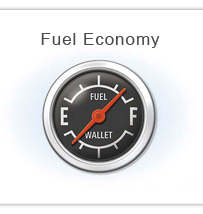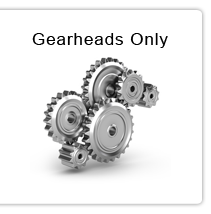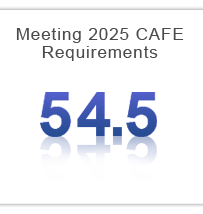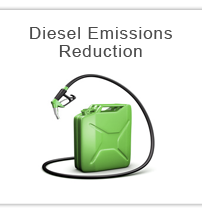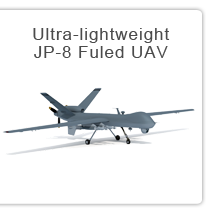





Overview
The TEC SineDrive™ engine platform is essentially a conventional, in-line engine wrapped in a circle, with all parts from the pistons and above being similar to commercially available engine components. However, in place of a crankshaft mechanism, our technology uses a SineDrive™ to transfer motion from pistons to the engine's driveshaft.
How Our Engine Works
The pistons in our engines are arranged such that they interface with the SineDrive™ with guided rollers. As the pistons reciprocate, they rotate the SineDrive™ to convert the reciprocal motion of the pistons to the rotary motion of the driveshaft. An animation of an operating SineDrive™ can be found by clicking this link: SineDrive™ Animation.
With the exception of the SineDrive™ our engine design is conventional, using proven and existing cylinder and valvetrain components. The engine offers a conservative approach to alternative engine design.
Background of the SineDrive™
While TEC's SineDrive™ engine design is new, the concept of a SineDrive™ type system has been proposed in the past. Some World War II era torpedoes used a simple version of a swash-plate type mechanism that was similar to a TEC SineDrive™. Since then, advancements in materials, computer modeling, and computer-aided machining have only recently made practical applications of SineDrive™ engine technologies possible. TEC has benefited by being the first company to make major investments in developing a SineDrive™ engine during a time when our design and patents could benefit from these advancements. Our innovations pertain to how our pistons interface with our SineDrive™ mechanism by means of roller bearings, and how the position of the SineDrive™ is controlled relative to the engine – enabling infinitely variable compression across a defined range. Our patents also pertain to valvetrain improvements and to general improvements throughout our engine design that assist with manufacturing and durability.
Cost-Effective Variable Compression
Achieving variable compression with the TEC SineDrive™ platform is as fundamentally simple as a gear shift in a transmission, and is expected to yield a commercially viable variable compression ratio engine with low cost and excellent durability.
Prototype testing and modeling suggest that, in spark-ignited gasoline and natural gas fueled applications, our approach to varying compression ratio should provide 35% better fuel economy than standard technology spark-ignited engines of similar power. In JP-8 fueled UAV applications our ability to vary compression ratio is expected to enable the engine to have as much as 2.8 times the power-to-weight density of existing JP-8 fueled UAV engines. (See Solutions/Ultra-lightweight UAV.) In standard diesel applications, fuel economy can be improved and emissions can be substantially reduced by expanding the usable range of HCCI operation.
While other variable compression ratio engines have been shown to exhibit up to 35% better fuel economy, implementing such a design into a conventional crankshaft engine has not been commercialized because of difficulties related to conventional crankshaft architecture. A design capable of varying compression ratio, while maintaining reliability, durability, and cost has not yet been achieved in a crankshaft engine. TEC SineDrive™ technology, however, provides an engine architecture that naturally allows a durable, cost-effective method for varying compression ratio.
How We Vary Compression Ratio
In our engine designs, the SineDrive™ will be attached to the engine's central driveshaft by a splined connection. This will enable the SineDrive™ to move axially along the length of driveshaft by the same means that a rotating gear is shifted in a conventional transmission. To increase compression ratio, the SineDrive™ is moved closer to the head of the engine, which reduces the volume of the combustion chamber. To decrease compression ratio, SineDrive™ is moved away from the head of the engine, which increases the volume of the combustion chamber. In the TEC-1™, the SineDrive™ only needs to be moved by six millimeters (about ¼ inch) for the engine to realize its full range of compression ratio.
Torque-Doubling
The design of the TEC SineDrive™ will allow every engine cylinder to fire twice as many times per revolution as can be achieved with a crankshaft. Therefore, engine torque is doubled compared to that of a conventional engine of similar power. This is expected to allow for diesel torque performance in a spark-ignited engine.
For UAV applications, the high torque and low operating speed of the TEC Helios™ design will eliminate the need for reduction gearing between the engine and propeller, further reducing weight. The absence of reduction gearing is also expected to be advantageous for marine applications.
Component Simplification
Components are simplified and parts count is reduced by using a SineDrive™. The valvetrain in gasoline and natural gas versions of our engine will use only two camshaft lobes versus a range of 12 to 24 in a traditional six-cylinder engine. The two-cycle TEC Helios™ UAV engine will require only one exhaust camshaft lobe. For both engines, this is accomplished while still using standard valvetrain components.
Since our engines complete all of their operating cycles in one revolution of the SineDrive™, direct engagement of the driveshaft to the valvetrain can be achieved. This eliminates the need for a timing chain or belt, thus reducing initial cost as well as maintenance costs related to timing chain or belt service.
Variable Compression 101
A compression ratio is the initial volume of a cylinder when the piston is at its lowest position, compared to the volume of the cylinder when the piston is at its highest position and the air and fuel mixture is fully compressed.
In general, the higher an engine's compression ratio, the more efficient it will be at extracting power from fuel. However, if an engine's compression ratio is too high, the engine will be damaged by engine knock or premature ignition.
Every engine in mass production today has a compression ratio, which is set at the time it is manufactured to best address the compromise between fuel economy and engine life.
TEC technology is unique because it incorporates a simple means of varying compression ratio and does not need to restrict engines to a preset compression ratio. By varying compression ratio, TEC's engines are designed to maintain peak efficiency and power density across all operating conditions while still maintaining a long engine life.
Variable Compression and Fuel Economy
A higher compression ratio means better fuel economy, but compression ratio must be limited to avoid engine damage. In the case of a conventional automotive gasoline engine, compression ratio is typically set to approximately 10:1. A low setting like this is required to keep the engine from being damaged when at full throttle. However, during a typical driving cycle, an automotive engine is very rarely at full throttle. As an example, the average power used by an SUV through a drive cycle is only 35 horsepower, even though SUV engines are typically capable of up to 300 horsepower.
At times when an engine is at cruise, or otherwise under low power demand, a much higher compression ratio can be used without any risk of engine damage. The combination of turbocharging and using a higher compression ratio at times of low power, a combination enabled by TEC technology, is expected to cumulatively boost drive cycle fuel economy by 35%.
Variable Compression and Power Density
Conventional JP-8 diesel UAV engines must address a trade-off between having the engine be capable of high altitude flight or maintaining a low engine weight. While at sea level, in order to achieve high power density (and therefore low engine weight), a relatively low compression ratio must be used. However, to achieve stable combustion of JP-8 diesel fuel at high altitude, where the atmosphere is thin, a relatively high compression ratio must be used. Since high altitude operation is required for most UAVs, conventional JP-8 UAV engines are very heavy compared to gasoline engines.
The TEC Helios™ UAV engine will not require a trade-off between the values of altitude vs. weight because it is able to vary its compression ratio. It will use a low compression ratio at sea-level to remain lightweight, and to use a high compression ratio at high altitude to maintain stable combustion of JP-8 fuel.





